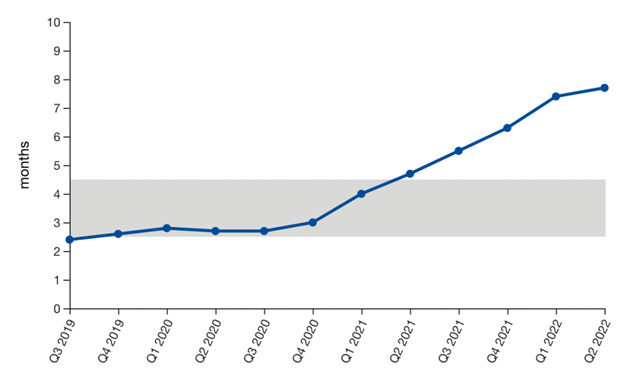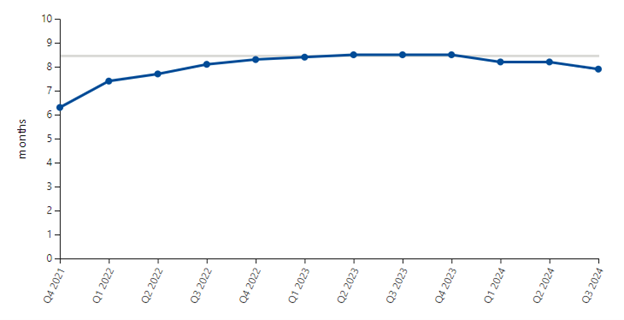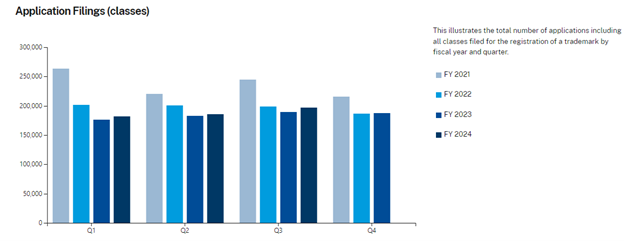The U.S. Court of Appeals for the Federal Circuit (Federal Circuit) recently issued a decision interpreting one of the exception provisions in AIA U.S.C. § 102(b), namely subsection (b)(2)(B). Sanho Corp. v. Kaijet Tech. Int’l, 108 F.4th 1376 (Fed. Cir. 2024). The patentee in Sanho Corp. sought to disqualify a U.S. Patent Application Publication to another (Kuo) that was “effectively filed”[1] prior to the effective filing date of the claimed invention (i.e., was prior art under section 102(a)(2) but for an exception). The patentee sought to invoke the prior art exception in section 102(b)(2)(B) on the basis of a private sale by the inventor occurring before the “effectively filed” date of Kuo.
The patentee argued that this prior private sale of the relevant subject matter by the inventor meant that the subject matter was “publicly disclosed” by the inventor because a private sale is considered a “disclosure” (prior art) under section 102(a)(1) per Helsinn.[2] Prior to Helsinn, the USPTO’s 2013 guidelines stated that it “views the ‘or otherwise available to the public’ residual clause of the AIA’s 35 U.S.C. § 102(a)(1) as indicating that secret sale or use activity does not qualify as prior art” (and set out a lengthy explanation for that position).[3] That is, prior to Helsinn, the USPTO did not view activity that did not result in the subject matter being “publicly disclosed” (such as a secret sale or use) as prior art or a “disclosure” under section 102(a)(1).[4] The U.S. Supreme Court, however, held in Helsinn that “an inventor’s sale of an invention to a third party who is obligated to keep the invention confidential can qualify as prior art under § 102(a).”[5] The patentee in Sanho Corp. thus argued that the prior private sale—equated to a public disclosure of the subject matter under Helsinn—meant that “the subject matter disclosed [in Kuo] had, before such subject matter was effectively filed under [section 102](a)(2), been publicly disclosed by the inventor [through the private sale] . . . ,” disqualifying Kuo as prior art per the section 102(b)(2)(B) exception.
The Federal Circuit, however, rejected the argument that placing subject matter “on sale” under section 102(a)(1) means that the subject matter is necessarily “publicly disclosed” for purposes of section 102(b)(2)(B). The Federal Circuit drew a distinction between “disclosure” in subparagraph (A) of sections 102(b)(1) and (b)(2), and “publicly disclosed” in subparagraph (B) of sections 102(b)(1) and (b)(2). The Federal Circuit stated that the section 102(b)(1)(A) exception applies to “disclosures” covered by section 102(a)(1), and the section 102(b)(2)(A) exception applies to “disclosures” covered by section 102(a)(2). Thus, a private or public sale under section 102(a)(1) by the inventor occurring during the grace period is covered by section 102(b)(1)(A). The Federal Circuit, however, held that the section 102(b)(1)(B) exception does not apply to “disclosures” under section 102(a)(1) that do not result in the subject matter being “publicly disclosed.”
Sanho Corp. is just one illustration that the AIA subparagraph (B) exception provision of sections 102(b)(1)[6] and (b)(2) cannot be viewed as functioning like showing prior invention under the former first to invent system. There are a number of other significant differences between this subparagraph (B) exception provision and showing prior invention under the former first to invent system.
One of these differences is that the “subject matter” “disclosed” in subparagraph (B) of sections 102(b)(1) and (b)(2) relates to the subject matter being disqualified as prior art, not to the claimed invention.[7] According to the USPTO, showing prior disclosure of the claimed invention may not be sufficient to disqualify intervening prior art.[8] It is not clear if the courts will agree with this interpretation, but the USPTO’s guidance requires that the subject matter sought to be disqualified and the subject matter previously “publicly disclosed” by the inventor be identical (i.e., the exception does not reach to non-identical subject matter even if the differences amount to mere insubstantial changes, or trivial or obvious variations).[9] The USPTO’s guidance provides as an example that prior public disclosure of a species can disqualify a subsequent intervening grace period disclosure of a genus, but that a prior public disclosure of a genus would not be able to disqualify the subsequent intervening grace period of a species, making that species disclosure available as prior art under section 102(a)(1).[10]
Another one of these differences is that while section 102(b)(2) has no express grace period requirement, there is a de facto “one year” limitation with respect to its subparagraph (B) provision. If the prior art (subject matter in a U.S. patent or published application) to be disqualified under subparagraph (B) of section 102(b)(2) was effectively filed more than one year before the effective filing date of the claimed invention, it would require a showing that the inventor “publicly disclosed” that subject matter more than one year before the effective filing date of the claimed invention. In this situation, the inventor’s own public disclosure of that subject matter is itself prior art under section 102(a)(1) that is outside the one year grace period of section 102(b)(1).[11] This de facto one year or grace period limitation: i.e., whether prior invention took place before or after the grace period, did not exist when showing prior invention to antedate U.S. patents and published applications that otherwise qualify as prior art under pre-AIA 35 U.S.C. § 102(e).
Sanho Corp. is only the first decision to deal with the subparagraph (B) provision of section 102(b)(1) or (b)(2), and the courts may or may not agree with the USPTO’s guidance on that provision. What is clear is that this provision does not operate in the manner of antedating prior art under the former first to invent system. The USPTO received comments suggesting that it should treat a prior public disclosure as if it were a provisional application.[12] The better answer here is self-help: if one wants a public disclosure to be treated as a provisional application, one should concurrently file the disclosure in a provisional application.
[1] Section 102(d) defines when subject matter in a patent or published application is considered to have been “effectively filed” for purposes of section 102(a)(2). Both the Kuo U.S. application filing date (February 17, 2017) and priority date (December 13, 2016) are before the Sanho Corp effective filing date (April 27, 2017) and also after the private sale date (November 17, 2016).
[2] Helsinn Healthcare S.A. v. Teva Pharmaceuticals USA, Inc., 586 U.S. 123 (2019).
[3] Examination Guidelines for Implementing the First Inventor To File Provisions of the Leahy-Smith America Invents Act, 78 Fed. Reg. 11059, 11060, 11061-63 (Feb. 14, 2013) (FITF Guidelines).
[4] The USPTO’s 2013 guidelines did not treat a private or secret sale as amounting to the subject matter of the sale being “publicly disclosed” under the subparagraph (B) provision of section 102(b)(1) or (b)(2) likely because the USPTO did not (in 2013) consider such a sale as being prior art or a “disclosure” under 35 USC 102(a)(1) in the first place.
[5] Helsinn, 586 U.S. at 132. Possibly portending its decision in Looper Bright Enterprises, Helsinn does not even mention the USPTO’s prior interpretation of the “on sale” provision of AIA section 102(a)(1) (or an amicus brief by Congressman Lamar Smith, the “Smith” of the Leahy-Smith America Invents Act). The USPTO issued a memorandum in response to Helsinn removing the requirement that “the sale must make the invention available to the public” from its guidance to examiners concerning the phrase “on sale” in section 102(a)(1)).
[6] Sanho Corp. involved 35 U.S.C. 102(b)(2)(B), but the wording of the subparagraph (B) provision of sections 102(b)(1) and (b)(2) differ only in that subparagraph (B) of section 102(b)(1) states “disclosure” in place of “subject matter was effectively filed under subsection (a)(2).”
[7] See FITF Guidelines, 78 Fed Reg. at 11077 (the subparagraph (B) provision “does not involve a comparison of the subject matter of the claimed invention to either the subject matter disclosed by the inventor . . . or to the subject matter of the subsequent intervening grace period disclosure”). While not at issue, Sanho Corp. speaks in term of comparing the subject matter asserted to have been publicly disclosed by the inventor and both the prior art (Sanho Corp., 108 F.4th at 1380 n.3 (“[w]e do not reach this issue, but assume, without deciding, that Sanho is correct that the HyperDrive [subject of the sale] embodied the relevant teaching of Kuo that were asserted against the ’429 patent”) and Sanho Corp., 108 F.4th at 1385 (“the sale of the HyperDrive here did not publicly disclose the subject matter relied on from Kuo as required by section 102(b)(2)(B)”)) and the invention (Sanho Corp., 108 F.4th at 1385 (“even if we assume, see supra n.3, that the device did embody the subject matter of the invention”)). This interchanging of the subject matter of Kuo and the subject matter of the invention is likely due to the identity of the relevant subject matter of Kuo and the invention.
[8] Sanho Corp. discusses AIA floor debates while also questioning their pertinence. There are floor statements that can be cited to support the argument that once the inventor has publicly disclosed the invention, subsequent disclosures do not constitute prior art. Sanho Corp., 108 F.4th at 1383 (discussing statement of Sen. Jon Kyl). Either side of the argument will be able to find friends in the crowd. FITF Guidelines, 78 Fed. Reg. at 11085 n.34 (discussing various legislative materials on the subparagraph (B) provision). Nonetheless, the subparagraph B provision of sections (b)(1) and (b)(2) does not itself mention the “invention” or “claimed invention”: i.e., its “subject matter” goes to the subject matter of the prior art (“(2)—A disclosure shall not be prior art to a claimed invention under [section 102](a)(2) if— . . . (B) the subject matter disclosed had, before such subject matter was effectively filed under [section 102](a)(2), been publicly disclosed by the inventor. . . ;”).
[9] FITF Guidelines, 78 Fed. Reg. at 11061(“[t]hese examination guidelines maintain the identical subject matter interpretation of AIA 35 U.S.C. 102(b)(1)(B) and 102(b)(2)(B)”). The guidelines, however, do not apply a verbatim or ipsissimis verbis requirement, and allow for different modes of disclosure and for subject matter sought to be disqualified to be a more general description of the subject matter previously “publicly disclosed” by the inventor.
[10] FITF Guidelines, 78 Fed Reg. at 11077.
[11] Strictly speaking, section 102 does not by its terms prohibit the use of subparagraph (B) of section 102(b)(2) to disqualify section 102(a)(2) prior art that was effectively filed more than one year before the effective filing date of the claimed invention, or the use of subparagraph (B) of section 102(b)(1) or (b)(2) on the basis of the relevant subject matter being “publicly disclosed” by the inventor more than one year before the effective filing date of the claimed invention. That course of action, however, would only change the grounds for unpatentability to section 102(a)(1) based on the inventor’s public own disclosure—outside the grace period—of the relevant subject matter. FITF Guidelines, 78 Fed. Reg. at 11076-77.
[12] FITF Guidelines, 78 Fed. Reg. at 11067.



